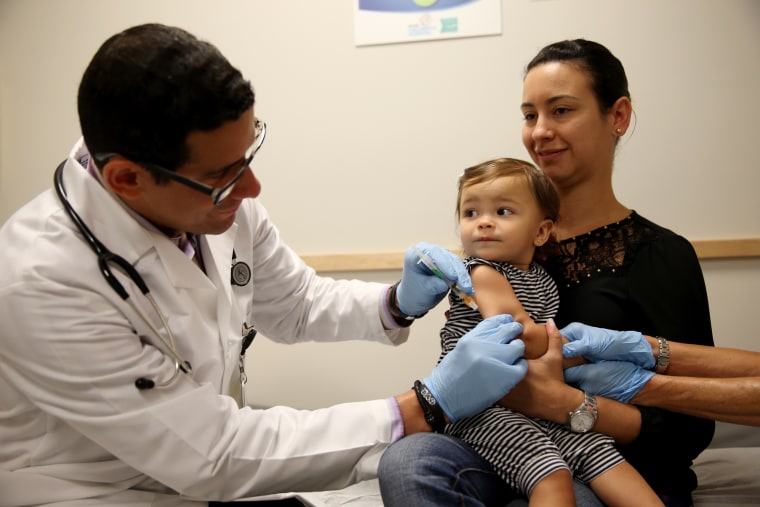Measles cases more than tripled in Europe last year, with outbreaks and epidemics fueled by low vaccination rates, the World Health Organization says.
More than 21,000 people caught the virus in 2017, and 35 people died of it, WHO said. The numbers stunned officials after a record low of 5,200 cases in 2016.
Advisers met Tuesday to talk about how to increase vaccination rates in Europe.
“Every new person affected by measles in Europe reminds us that unvaccinated children and adults, regardless of where they live, remain at risk of catching the disease and spreading it to others who may not be able to get vaccinated,” Dr. Zsuzsanna Jakab, WHO Regional Director for Europe, said in a statement.
“Over 20,000 cases of measles, and 35 lives lost in 2017 alone, are a tragedy we simply cannot accept.”
Europe has been struggling to control measles for years. One of the worst recent years was 2013, when there were more than 10,000 cases across Europe. But 2017 had more than doubled that number.
The worst recent year in the United States was 2014, when there were 667 cases of measles. Last year, 86 people were diagnosed with measles in the U.S. and so far this year 9 cases have been reported to the Centers for Disease Control and Prevention.
“The majority of people who got measles were unvaccinated,” the CDC says. “Travelers with measles continue to bring the disease into the U.S. Measles can spread when it reaches a community in the U.S. where groups of people are unvaccinated.”
That’s what is happening in Europe, as well. The CDC has issued travel advisories about Europe, reminding Americans to make sure they are up to date on the measles, mumps and rubella (MMR) vaccine.
Experts say that to control measles, 95 percent of the population must be vaccinated or immune because of a past infection. Measles is one of the most infectious viruses — it infects 90 percent of people who are exposed to it if they aren't immune, and it can hang in the air and infect people who enter a room as long as two hours after an infected person has left.
But social media has helped spread incorrect information about vaccine effectiveness and safety. Vaccine critics have helped lower rates in Italy, the country's health authorities say. Vaccination rates fell from 90 percent in 2010 to 85 percent in 2015.
And countries with fewer resources to provide vaccines have trouble getting them even to people who want them.
WHO said Romania had the most cases last year with 5,562. Italy had more than 5,000 cases and Ukraine had 4,767 cases.
It says more than 20 million people were infected with measles in 2016.
Despite the increases in Europe, WHO says vaccination against measles is a success story.
“Global measles deaths have decreased by 84 percent worldwide in recent years — from 550,100 deaths in 2000 to 89,780 in 2016,” WHO says.


